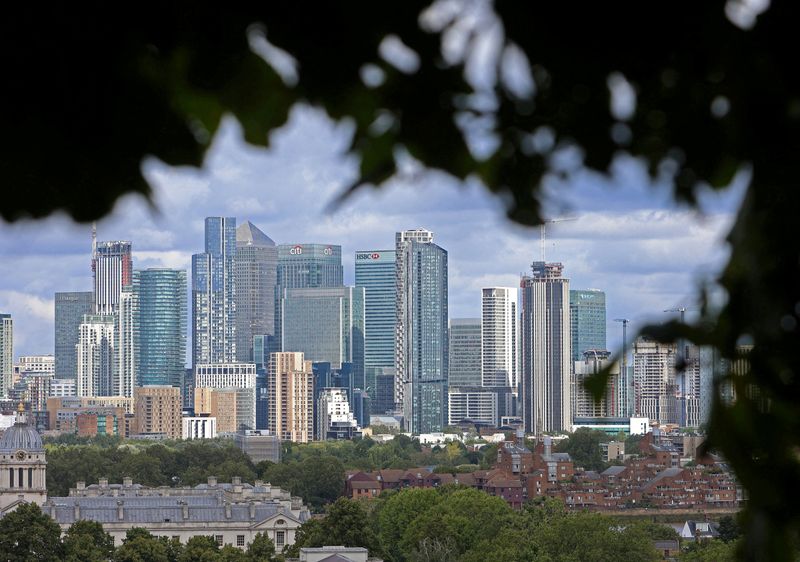LONDON (Reuters) -British government bond prices fell sharply on Thursday after the U.S. Federal Reserve shocked global financial markets by signalling it would move slowly with cutting interest rates next year, despite lowering borrowing costs on Wednesday.
The yield on 10-year British gilts - which rises when prices fall - hit the highest since October 2023 at 4.656%, a jump of about 10 basis points on the day - roughly double the increase for German government bonds - before easing back a bit.
Two-year gilt yields climbed by a similar amount to reach their highest since May at 4.560%, also outpacing bunds.
British borrowing costs leapt earlier this week after official data showed faster-than-expected wage growth which could add to the Bank of England's worries about inflation and its reticence about cutting interest rates.
The gap between British and German 10-year government bond yields reached to its highest level in 34 years on Wednesday, in a sign of the diverging interest rate outlooks for the BoE and European Central Bank, and it widened further on Thursday.
British interest rate futures pointed to roughly 46 basis points of cuts to the BoE's benchmark Bank Rate by December 2025 - or slightly less than two quarter-point rate cuts - down from about 50 basis points of cuts priced in on Wednesday.

The BoE is expected to keep borrowing costs on hold at 1200 GMT on Thursday after its December monetary policy meeting and investors saw only a 42% chance of it cutting Bank Rate at its subsequent meeting in February.
The BoE has said it will move gradually to lower rates because of inflation pressures, despite signs of a slowdown in Britain's economy.